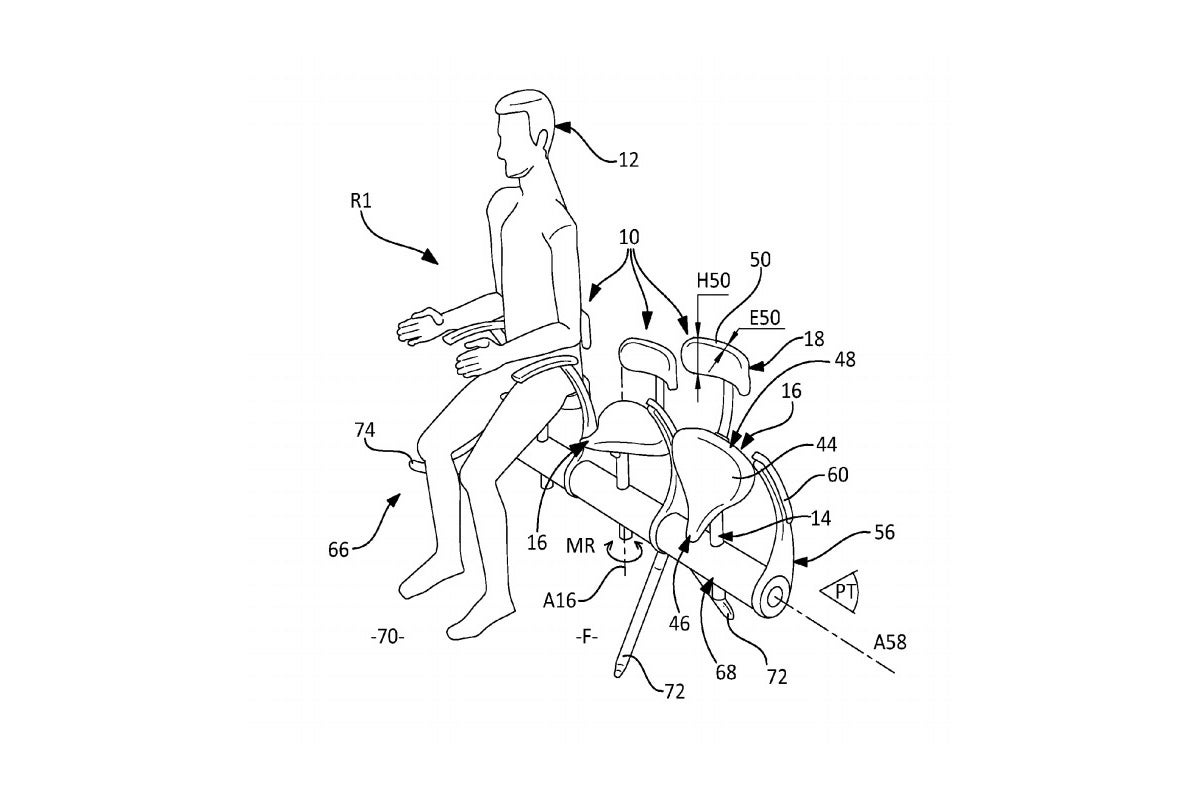At first glance, it would seem that Airbus is busy conjuring new ways to torment coach-class airline passengers. The aircraft manufacturer recently filed a patent application that would further reduce the amount of space between seats on an airplane, allowing airlines to cram more passengers than ever into economy class. The new “seating device,” which looks like a cross between a bicycle seat and an office chair, is mercifully designed for use in short-haul flights; as the Los Angeles Times pointed out, “it has no tray table, no headrest, and very little legroom.” Brian Fung of the Washington Post jokingly described it as a “medieval torture device.” Many commenters expressed similar revulsion, swapping horror stories from various flights gone wrong.
But not everything about the Airbus proposal is bad. In its patent application, Airbus helpfully acknowledges that “it is no longer possible to further reduce the seating width, particularly in economy class.” In other words, your terrible seatmate digging his elbow into your ribcage will not be enabled to dig any harder by his new bicycle seat. But passenger width isn’t the only conundrum that airlines face today. Airbus also addresses the pesky issue of legroom, stating, “it is difficult to further reduce [the] distance between the seats because of the increase in the average size of the passengers.” Tall people, that means you.
Current seating configurations are particularly painful for long-legged individuals, who shockingly don’t quite fit into a space designed to provide the bare minimum wriggle room possible for a person of average leg length. Even if you do fit, chances are the passenger in front of you will fully recline into the already-bruised flesh of your knees, igniting a murderous rage. At 6’4’’, I speak from experience: Shorter people have it easy when it comes to some forms of mass transit. What exactly are taller individuals (in this case meaning anyone above the average U.S. male height of 5’9’’) supposed to do with their knees? Put them in overhead bins? For many of us, the only answer is shelling out extra cash for exit-row or economy-plus seats, which are harder to come by.
Even in an exit-row seat, the foam-and-metal slabs we are accustomed to today are horrible: a 31-inch seat-pitch (a normal allotment for a seated person, butt-to-knee) is an insult to the vertically gifted passenger. In contrast, Airbus’ new seating “makes it possible to raise the seating further by comparison with the aircraft seats with a parallelepipedal seating.” Parallelepipedal refers to the three-dimensional parallelogram of despair in which today’s economy class passengers are confined. (It’s also satisfying to say aloud.) In turn, the patent explains how the height-adjustable seat “enables each passenger to adapt the seating height to his or her morphology, and this avoids providing an excessive necessary distance for passengers of large size by avoiding having them seated too low.” Much as bicycle seats and office chairs may be adjusted for height, seating that allows for height adjustment might spare tall passengers the indignity of clown-car situations.
And parallelepipedal seating isn’t exactly good for anyone’s posture, anyway. A flat rectangle of foam may look comfier than a saddle seat, but it does a number on your lower back. While the new seating looks Spartan, it simply provides support where it is most needed: the lumbar region. Similarly, the “motorcycle-saddle” style seat better supports the buttocks, even swiveling to provide rotational mobility in the lower back.
In order to reassure anxious travelers desperately clinging to what little space they have, a company spokeswoman emphasized the conceptual nature of the patent. A patent merely establishes the idea as Airbus’ intellectual property: something to build upon, tinker with, and improve before eventual implementation. (Seatbelts, for example, are probably a necessary step.) The new seats aren’t perfect, but they’re on the right path. And for the airlines, fitting more economy-class passengers on each flight helps keep prices down while still protecting the significant revenue stream from business and first-class tickets. For those of us who happen to be tall, the simple concept of a height-adjustable seat offers sweet relief in the skies.
